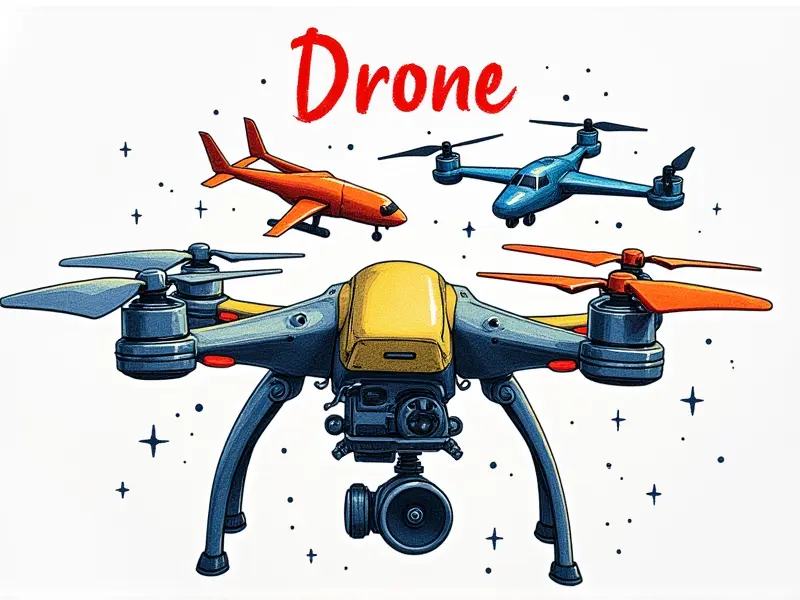How does an RC plane work?

How Do RC Planes Really Work?
Remote control (RC) planes are fascinating machines that combine aerodynamics, electronics, and mechanics to create a thrilling experience for hobbyists. Understanding how these aircraft function can enhance your enjoyment of the hobby and help you troubleshoot issues more effectively.
Inside the Mechanics of RC Aircraft
The inner workings of an RC plane involve several key components that work together seamlessly:
- Fuselage: The main body of the aircraft where all other parts are attached.
- Wings: Provide lift and control surfaces for maneuvering.
- Tail Section: Includes a horizontal stabilizer, elevator, rudder, and vertical fin to maintain stability.
- Propeller: Generates thrust when powered by an engine or electric motor.
Understanding RC Plane Aerodynamics
Aerodynamics plays a crucial role in the flight of RC planes. Key concepts include:
- Lift: Created by airflow over the wings, allowing the plane to rise and stay aloft.
- Thrust: Generated by the propeller or jet engine, pushing the aircraft forward.
- Drag: Resistance encountered as the plane moves through the air.
- Weight: The gravitational force acting on the plane, which must be counteracted by lift for sustained flight.
Secrets of RC Plane Operation Revealed
The operation of an RC plane involves a sophisticated system of controls and sensors:
- Radio Transmitter: Sends signals to the receiver in the aircraft via radio waves.
- Receiver: Receives commands from the transmitter and sends them to servos and motors.
- Servos: Small electric motors that control flaps, ailerons, elevator, and rudder.
RC Plane Functionality Simplified
To simplify the functionality of an RC plane, consider these essential elements:
- Power Source: Battery or fuel-powered engine providing energy for propulsion.
- Control Surfaces: Flaps, ailerons, elevator, and rudder that adjust the aircraft's attitude.
- Sensors: Gyroscopes, accelerometers, and GPS modules to maintain stability and navigation.
Breaking Down RC Plane Mechanics
The mechanics of an RC plane involve intricate systems working in harmony:
- Mechanical Linkages: Connecting servos to control surfaces for precise movement.
- Propulsion System: Consisting of a motor or engine and propeller, generating forward motion.
- Flight Control Systems: Incorporating electronic components that manage stability and flight path.
How Do RC Planes Take Flight?
The process of takeoff for an RC plane involves several steps:
- Preparation: Ensuring all systems are functioning correctly, including battery levels and control surfaces.
- Runway Positioning: Aligning the aircraft with the runway to optimize acceleration.
- Throttle Application: Gradually increasing power until lift is sufficient for takeoff.
Understanding RC Plane Propulsion Systems
The propulsion system of an RC plane can be either electric or fuel-based:
- Electric Motors: Efficient and quiet, powered by rechargeable batteries.
- Piston Engines: More powerful but require regular maintenance and fuel.
Secrets of RC Plane Stability and Control
Maintaining stability and control in flight is crucial for safe operation:
- Ailerons: Roll the plane left or right to maintain balance.
- Elevator: Adjust pitch (nose up/down) for ascending or descending.
- Rudder: Yaw control, turning the nose left or right.
Mastering the Art of Flying RC Planes
To master flying RC planes, focus on these key skills:
- Basic Maneuvers: Learn to take off, land, and perform basic turns and loops.
- Safety Practices: Always follow safety guidelines and fly in designated areas.
- Troubleshooting: Understand common issues like battery drain or control lag and how to address them.
Unveiling the Secrets of RC Aviation
The world of RC aviation is full of secrets waiting to be discovered. By understanding the mechanics, aerodynamics, and operational nuances of RC planes, you can unlock a deeper appreciation for this exhilarating hobby:
- Innovation: Explore new technologies like autonomous flight systems.
- Community: Engage with fellow enthusiasts to share knowledge and experiences.
- Experimentation: Try different aircraft designs, propulsion methods, and control techniques.
Conclusion
The mechanics of RC planes are a blend of cutting-edge technology and classic aviation principles. By delving into the inner workings of these miniature marvels, you can enhance your flying skills and deepen your appreciation for this dynamic hobby. Whether you're a beginner or an experienced pilot, there's always more to learn about how RC planes work.

